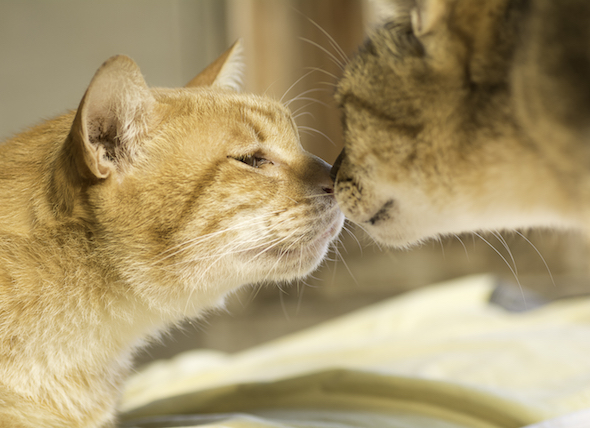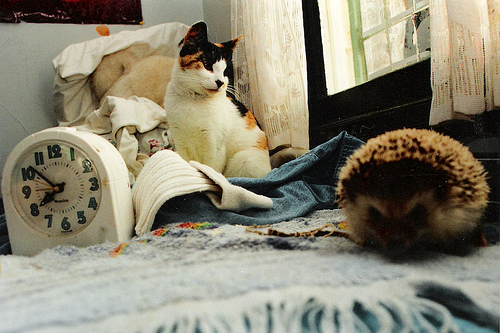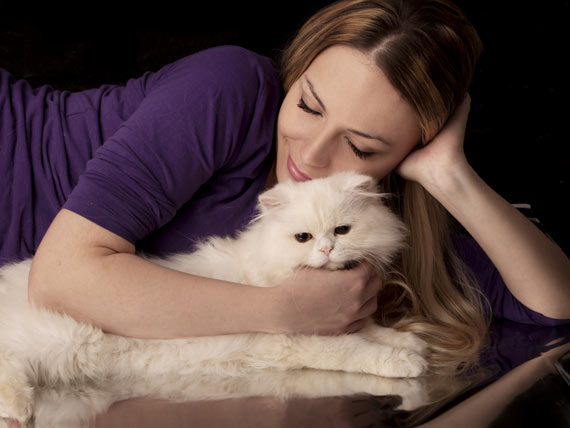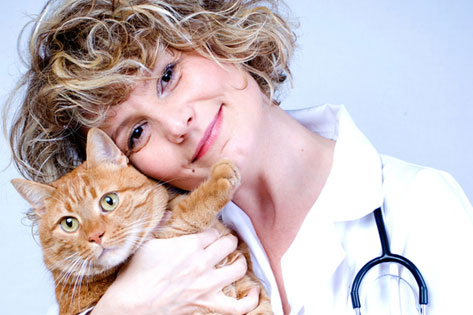

By Lynne Miller
If your cat used to live amicably with another cat, you might assume that your pet will accept a newcomer with no hissing or howling. Unfortunately, cats are territorial animals and will not welcome just any feline into the family. Introducing cats requires patience and sensitivity, so you should prepare for it to take some time for cats to accept one another.
Like finding a roommate or partner, matching up cats requires an understanding of what makes each creature tick. Consider your resident cat’s personality and look for an animal that’s similar in personality and energy level.
“The more you can get cat personalities to match, the better,” says Megan Maxwell, a certified applied animal behaviorist in Blacksburg, Virginia. “Cats that are similar in personality are more likely to hit it off. A playful cat is a good match for a playful kitten.” At the same time, a lively kitten may clash with a calm, older cat.
Before you bring your new cat home, prepare yourself for the introduction. The initial introduction is important since it can make or break the relationship that develops between the animals, says Pam Johnson-Bennett, certified animal behavior consultant and author of Starting from Scratch: How to Correct Behavior Problems in Your Adult Cat.
“For both cats abrupt introductions will cause them to go into survival mode and they will start out their relationship being hostile toward each another,” Johnson-Bennett writes in her book.
“While in some cases, that hostility may ease as time goes on, it more often sets the tone for the relationship from that point on.”
Fortunately, the first introduction does not have to be negative. As you prepare to introduce your cat to a new addition, keep the following steps in mind.
When you bring the new cat home, place her in a room that’s not the resident cat’s primary space and keep both animals isolated so that they cannot see one another, preferably with a solid door between them. Make sure each cat has her own food, water, litter box and scratching post. Before introducing the cats, make sure each one is relaxed and adjusting well to the situation. At first, the cats may sniff at one another under the closed door, which can help them get used to each other in a non-threatening, non-visual way.
Scent transfer “is a way to bring each cat in contact with the other cat’s scent,” Maxwell said. “You pet your cat with a T-shirt or washcloth, then bring it into the other room and let the new cat sniff it, rub it and then bring to the other cat. If you see one cat hissing at the [item with the scent on it] that’s a red flag.”
Make sure each cat is relaxed and calm before moving on to the next step.
Put up a baby gate in the doorway of the room where one cat is isolated, cover the gate with a sheet so the cats can’t see one another and arm yourself with treats that you know each cat adores. Remove the sheet for a moment and let the cats see each other, then praise your cats, toss a treat to each animal and cover the gate with the sheet again.
“They get a quick peek at each other and they are rewarded for it,” says Matthew Wildman, pet care issues manager and resident cat expert at The Humane Society of the United States. “It’s got to be a treat that each one really loves or it’s not going to be a positive experience.”
Repeat this activity five to ten times in a row a few times each day. If the cats are not reacting to each other’s presence, you can gradually increase the amount of time they see one another.
If this step goes well, begin feeding the cats on opposite sides of the gate. Give them frequent but smaller meals each day so you’ll have more opportunities to bring them together at the gate. Begin feeding them at a distance from each other and if things go well, you can reduce the space between their food dishes. Always keep an eye on your animals. The goal is to get the cats to associate each other with good things, like treats and food.
Assuming things are going well, you can get one toy for each cat, preferably a toy fishing rod with a three-foot string with two attached feathers. Have one toy in each hand (or ask a friend to assist you) and play with the cats while you stand next to the gate so the cats are near each other but still separated. Keep play sessions short, always ending before any negative interactions occur, and reward the cats with a treat.
If things are going well, increase the amount of playtime. After a while, if the cats enjoy playing and there’s no hissing, hard staring or other hostile reactions, you can try playing with the cats without the gate between them.
“If the cat’s laying down, purring and casually glancing at the other cat or rubbing against the gate with her body, those are good indicators to move to the next step,” Maxwell said.
By now, your cats should be eating and playing peacefully in close proximity to one another. Remove the barrier between them and let them spend time together under your close supervision. If there’s the slightest sign of stalking or hard staring, you should distract and redirect the cats by showing them the fishing rod toy or other toys or treats. Be prepared to respond quickly to any potential aggression.
“If you feel there’s a chance they’ll have a fight, it’s better to have a piece of cardboard to put between them if the fight breaks out rather than reaching down with your hands,” Maxwell said.
Continue playing with the animals and end playtime on a happy note by rewarding them with treats. You can gradually increase the amount of time you allow the cats to be in the same area together, but always keep them under close supervision. It may take a while before you feel comfortable leaving them unsupervised.
“We want things to work out, but it may take more time than we think,” says Wildman, noting that you may have to go back a few steps in the process. “Patience almost always pays off with cats.”
If one cat hides more than usual, urinates outside of the box or grooms herself to the point of hair loss, those are signs that she is unhappy or stressed and you may need to spend more time working on positive reinforcement with the baby gate between your cats, Maxwell said. If problems persist, consult a board-certified animal behaviorist.
 How to Socialize a Kitten With New People
By Cheryl Lock
If you just brou
How to Socialize a Kitten With New People
By Cheryl Lock
If you just brou
 5 Tips for a Slimmer, Healthier Cat
How to Help Your Fat Cat Battle the Bulge
5 Tips for a Slimmer, Healthier Cat
How to Help Your Fat Cat Battle the Bulge
 Cat Interfering With Your Sleep?
How to Deal With Your Cat Waking You at Night
Cat Interfering With Your Sleep?
How to Deal With Your Cat Waking You at Night
 Choosing the Perfect Cat Name
The expected arrival of a cat in the house is
Choosing the Perfect Cat Name
The expected arrival of a cat in the house is
 The Healthy Ways Vets Take Care of Their Pets
By Jessica Remitz
Just like every other pet owner
The Healthy Ways Vets Take Care of Their Pets
By Jessica Remitz
Just like every other pet owner
Copyright © 2005-2016 Pet Information All Rights Reserved
Contact us: www162date@outlook.com